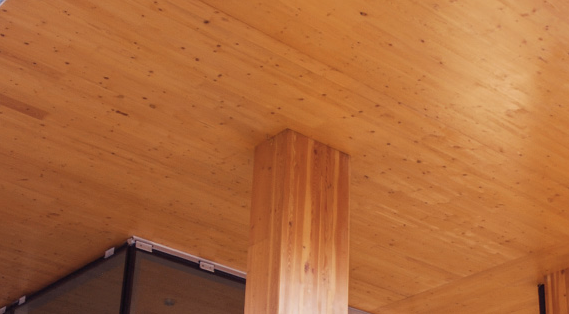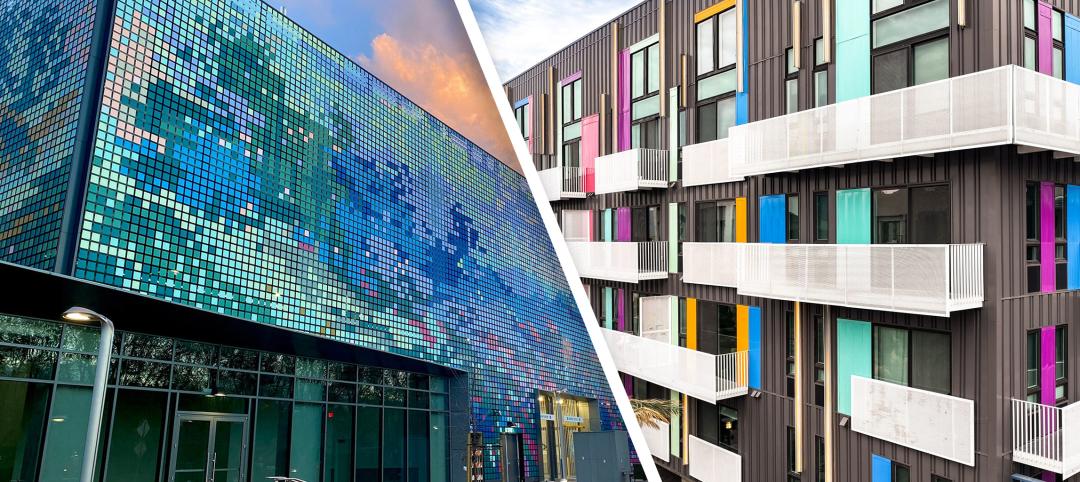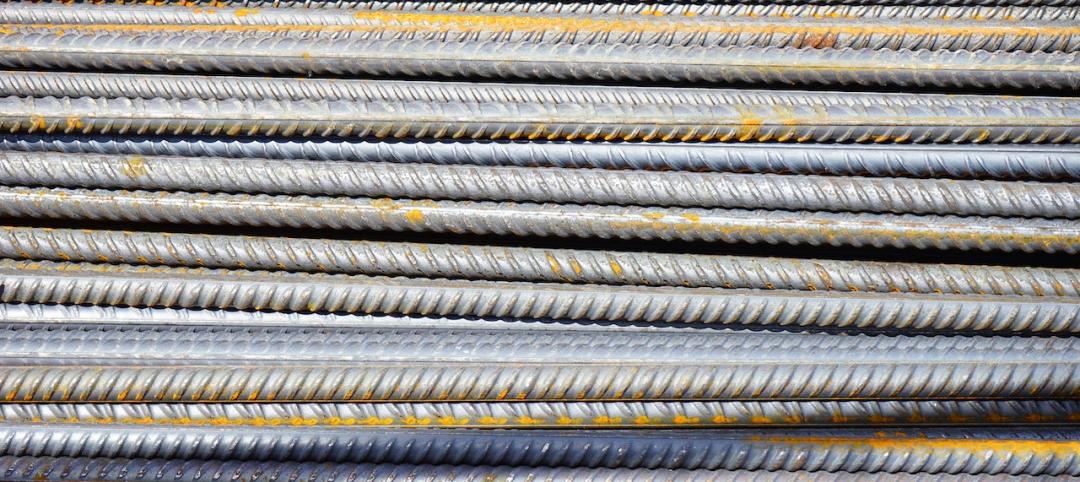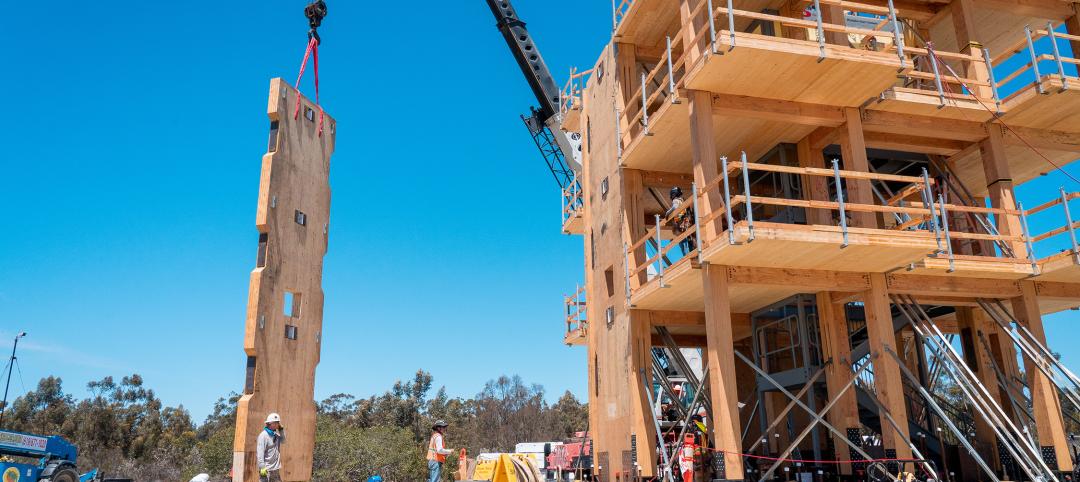Judging by the outcome of the International Code Council (ICC) Group A Committee Action Hearing, April 15-23, in Columbus, Ohio, it’s likely that we will be seeing more and taller mass timber buildings across the country very soon. At that hearing, 14 code proposals related to new and taller types of mass timber construction were recommended for approval by the broader ICC membership this fall.
The ICC’s move is historic. Though mass timber construction isn’t new to the building code community, having already been included in the International Building Code (IBC) as Type IV-Heavy Timber, the trend toward considerably taller wood buildings was so clear that the ICC moved in 2015 to keep the IBC relevant in the marketplace by updating the code.
Successful mass timber buildings of up to 18 stories have already been approved by local officials in the United Kingdom, Norway, and Canada. In the United States, at least 35 tall mass timber buildings, ranging from 7 to 24 stories, are pending approval in 21 different jurisdictions.
At the heart of the Committee’s proposals are three new kinds of Type IV mass timber construction, offering design options well beyond the current limits for heavy timber under the code.
With the market clearly responding to mass timber, the obvious question was: Will the model code be prepared? By appointing the “Ad Hoc Committee on Tall Wood Buildings” from the code official, fire service, regulatory, engineering, architectural and building materials communities, the ICC launched a two-year process to assess the science of mass timber, to field additional research, and to propose any code changes necessary to ensure the strength and safety of tall mass timber buildings.
At the heart of the Committee’s proposals are three new kinds of Type IV mass timber construction, offering design options well beyond the current limits for heavy timber under the code.
When passed by the ICC membership, the updated IBC will define Type IV-A, Type IV-B and Type IV-C “Mass Timber” construction with heights ranging to a maximum of 18 stories. Importantly, each new type of construction has hourly fire resistance ratings more robust than concrete/steel buildings of comparable heights and area.
Type IV-A, from 1 to 18 stories, requires non-combustible protection on all mass timber elements. Type IV-B, from 1 to 12 stories, permits limited exposure of mass timber elements when spaced adequately. Type IV-C. from 1 to 9 stories, permits exposed mass timber elements like what’s permitted under Type IV Heavy Timber in the current code. Type IV-C also keeps the current code’s Heavy Timber height limit.
All new Type IV requirements prohibit combustible material on exterior walls and require non-combustible protection for all concealed spaces, shafts and exit enclosures. Dual water supplies are also required for fire sprinklers on mass timber buildings over 120 feet, usually 8-12 stories.
It’s not surprising that the Committee proposals focused on providing reassurance that tall mass timber buildings meet or exceed the standards in the fire code. The inherent fire resistance of mass timber, where charring in a fire event creates a barrier that protects the inner wood structure, has long been understood. Indeed, testing by Underwriters Laboratory, Southwest Research Institute and the National Research Council of Canada has clearly demonstrated how charring of mass timber elements offers a reliable and predictable measure of fire performance.
But building taller required another look. Testing of full-scale mass timber structures in 2017 at the U.S. Government’s ATF Fire Research Laboratory helped establish the code requirements. Conducted without intervention by fire sprinklers, Type IV-A (fully protected) self-extinguished after 3 hours with no significant charring. Type IV-B (partially protected) concluded at 4 hours when it self-extinguished. Type IV-C (fully exposed) also self-extinguished at 4 hours.
The ICC code changes supported by this testing will usher in a new era in the construction of buildings in the low to mid-rise market. New options abound. Already, significant investment in the production of cross laminated timber (CLT) panels, the most popular mass timber application, has made tall mass timber buildings of up to 18 stories a cost-effective option for builders. Operating under the same ANSI quality standards, the supply chain is continuing to expand. With this growth, the market is already seeing lower costs and new products.
While widespread use of mass timber is good news for the economies in timber producing regions of the country, it also promises some distinctive benefits for builders, communities and the environment.
Builders, pressured by persistent labor shortages, are finding a wider pool or workers able to safely install mass timber panels. They also report significant labor savings and more efficient and safe job sites. Construction times are reduced by “just-in-time” delivery to job sites and quick installation of panels.
Of course, communities experience less noise and dislocation during construction and, by avoiding the usual stockpile of dimension lumber on site, fire risks are reduced. The positive environmental attributes of mass timber buildings, include a low energy intensity during manufacturing, superior energy efficiency in mass timber structures, and better management of a renewable resource.
However, it remains to be seen how the emergence of tall mass timber buildings will impact the built environment. Certainly, the buildings already completed have been well received. Many builders, architects, and engineers are optimistic. They note that favorable strength-to-weight ratios in mass timber opens new options.
How that future unfolds is unclear. But there can be little doubt that the emergence of tall mass timber buildings represents a paradigm shift for the construction community.
Related Stories
Construction Costs | Sep 28, 2023
U.S. construction market moves toward building material price stabilization
The newly released Quarterly Construction Cost Insights Report for Q3 2023 from Gordian reveals material costs remain high compared to prior years, but there is a move towards price stabilization for building and construction materials after years of significant fluctuations. In this report, top industry experts from Gordian, as well as from Gilbane, McCarthy Building Companies, and DPR Construction weigh in on the overall trends seen for construction material costs, and offer innovative solutions to navigate this terrain.
Mass Timber | Sep 19, 2023
Five Things Construction Specialties Learned from Shaking a 10-Story Building
Construction Specialties (CS) is the only manufacturer in the market that can claim its modular stair system can withstand 100 earthquakes. Thanks to extensive practical testing conducted this spring at the University of California San Diego (UCSD) on the tallest building ever to be seismically tested, CS has identified five significant insights that will impact all future research and development in stair solutions.
Mass Timber | Sep 1, 2023
Community-driven library project brings CLT to La Conner, Wash.
The project, designed by Seattle-based architecture firm BuildingWork, was conceived with the history and culture of the local Swinomish Indian Tribal Community in mind.
Products and Materials | Aug 31, 2023
Top building products for August 2023
BD+C Editors break down 15 of the top building products this month, from frameless windscreens to smart fixture mount sensors.
Mass Timber | Jul 11, 2023
5 solutions to acoustic issues in mass timber buildings
For all its advantages, mass timber also has a less-heralded quality: its acoustic challenges. Exposed wood ceilings and floors have led to issues with excessive noise. Mass timber experts offer practical solutions to the top five acoustic issues in mass timber buildings.
Building Materials | Jun 14, 2023
Construction input prices fall 0.6% in May 2023
Construction input prices fell 0.6% in May compared to the previous month, according to an Associated Builders and Contractors analysis of the U.S. Bureau of Labor Statistics’ Producer Price Index data released today. Nonresidential construction input prices declined 0.5% for the month.
Mass Timber | Jun 13, 2023
Mass timber construction featured in two-story mixed-use art gallery and wine bar in Silicon Valley
The Edes Building, a two-story art gallery and wine bar in the Silicon Valley community of Morgan Hill, will prominently feature mass timber. Cross-laminated timber (CLT) and glulam posts and beams were specified for aesthetics, biophilic properties, and a reduced carbon footprint compared to concrete and steel alternatives.
Mass Timber | Jun 2, 2023
First-of-its-kind shake test concludes mass timber’s seismic resilience
Last month, a 10-story mass timber structure underwent a seismic shake test on the largest shake table in the world.
Mass Timber | May 23, 2023
Luxury farm resort uses CLT framing and geothermal system to boost sustainability
Construction was recently completed on a 325-acre luxury farm resort in Franklin, Tenn., that is dedicated to agricultural innovation and sustainable, productive land use. With sustainability a key goal, The Inn and Spa at Southall was built with cross-laminated and heavy timber, and a geothermal variant refrigerant flow (VRF) heating and cooling system.
Mass Timber | May 3, 2023
Gensler-designed mid-rise will be Houston’s first mass timber commercial office building
A Houston project plans to achieve two firsts: the city’s first mass timber commercial office project, and the state of Texas’s first commercial office building targeting net zero energy operational carbon upon completion next year. Framework @ Block 10 is owned and managed by Hicks Ventures, a Houston-based development company.
















